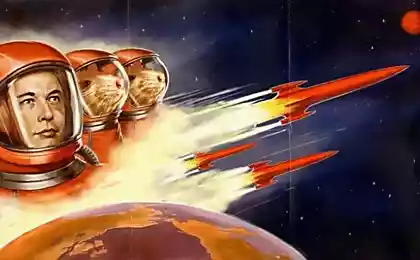620
A biomimetic marketing: nature as a mask of capitalism
Seven million eight hundred seven thousand one hundred twenty five
© Sears
Green electricity, organic shampoo, Jaguar convertibles, Red Bull, bio beef, Camel cigarettes and Puma sneakers. If you look closely, we are surrounded by a great number of products applying to nature through the brand. This phenomenon is called "biomimetic marketing": use of images of "natural" for product promotion. Philosopher and author of the concept of "Next Nature" Koert van Mensvoort explores how nature is transformed into a market and an ideological tool.
Nature is a terrific marketing tool, and corporations know it. Associations with nature give us a sense of recognition and trust. Often a biomimetic marketing uses a very peculiar, unexpected way. For example, when forced to choose between eighteen brands of condoms at the pharmacy, you intuitively reach out to those in the title has the word "natural", not paying attention to the fact that "natural condoms" is, in fact, an oxymoron and hardly fits into the concept of intimacy with nature. But who cares? After all, a biomimetic marketing closer to marketing than to nature. Its goal is the adoption of the positive qualities of the product in the consumer's mind. The nature of its aura of authenticity, harmony, beauty and depth is one of the best ways to achieve this goal. The result is a detailed analysis of the phenomenon of a biomimetic marketing, can be divided into five partially overlapping strategies of its application.

Strategy # 1: Nature as Estetica products from this category the relationship with the natural images used are weak or absent: Lacoste is in no way affiliated with crocodiles, Linux is irrelevant to the penguins, Bacardi — not about bats, but Apple is certainly not fruit company. Reference to natural imagery is used mainly for aesthetic reasons. The location of the mast cell repeater on the territory of the resort tourists will be made much warmer if to disguise it under a pine tree. Artificial Islands in Dubai, attract more attention and have higher market value, being designed in the shape of a palm tree. The argument of marketing both simple and effective: people are familiar with natural phenomena and, as a rule, treat them positively. Brands just use the existing perception in their favor.
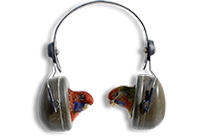
Strategy # 2: Nature as metaprograming between the first and second category slim: in the case of products of the second category, a connection with nature more focused on the function of the product. For example, calling Puma sneakers, their creators not only form a link to the aesthetic component, but also hope to project some of the positive qualities of this elegant, powerful animal to your product. The comparison should not be taken literally, it's more of a metaphor, after all Puma sneakers are made of plastic and not from Cougars. Other examples of this approach — a convertible Jaguar, bald eagle as the symbol of the United States, the chirping Twitter bird on the verge of extinction Panda as the logo of the world Fund of Protection of wildlife and the Bunny from Playboy magazine, which tells not about rabbits, and trying the alleged sexual appetites of rabbits in women. Just imagine what BF was, if the US government used the turtle as a mascot, and as their logos Puma used an elephant, a Twitter dog, WWF — Dodo, Jaguar — cow and the Playboy of the spider. It would have destroyed the identity of their brands.

Strategy # 3: Promote a sense naturalistically category methods of biomimicry in marketing combines a group of products that emphasize the feeling of naturalness. The bra is so light and soft that it literally feel naked. Hair dye that will make any brunette to a natural blonde. The previously mentioned natural condoms also fall into this category. What exactly is promised naturalness, as a rule, is not defined, but it is always something positive in the end, it is about selling product! I wonder what is the use of references to nature not only sells the product. As a side effect it also shapes our conception of nature as something beautiful, full of harmony, peace and tenderness.
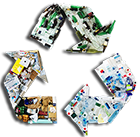
Strategy # 4: focus on ecologicalproblems fourth category do not have to transfer to the consumer the feeling of naturalness. Their biomimicry revolves around the concept of "friendly to nature". As a rule, comparison with other "less friendly" products from competing brands. You may recall, for example, the Toyota ECO Sports Utility Vehicle which is less polluting than the average SUV, hybrid Hummer or a Honda i-CTDI, which is singing flowers, birds and rabbits, dancing around the engine. They greeted him joyfully in his environment because it pollutes a little less than bad smelly diesel engine competitors.
Another example of "green" electricity. Although the electricity is not connected with nature, the "green" label attached is on the grounds that some of the electricity produced using renewable sources of energy. I wonder what the energy companies really not able to separate clean electricity from polluting in the course of its outlet. So when you switch to green electricity in your home continue to run the same electrons as before. The ecological component in this case is based solely on the words energy company, which is necessary in order to balance the percentage of electricity generated from renewable sources with a number of clients who prefer "green" electricity.
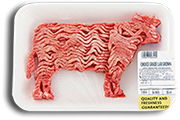
Strategy # 5: focus on natural proizvodstva category includes products that are produced naturally. It can be argued that in this case the statement about being out in nature are the most convincing. Think about eco-friendly tomatoes, mineral water from natural springs, organic shampoo and organic meat. Unlike conventional products that typically are produced in large industrial plants and stored with the use of chemical preservatives and dyes, bio-, eco - and organic products proudly emphasize their naturalness. In practice, this usually means a return to more traditional methods of production in small batches, reducing the degree of environmental pollution and the use of more sustainable methods of production.
In addition to the unique properties of naturalness of production, the products of this category often use many other, if not all, of the funds a biomimetic marketing described above. Organic products are usually sold in a green-brown packs are made of natural materials, often festooned with images of natural elements used in the production of the product. It is obvious that an honest, open process of production passes to the buyers of the product feeling healthy and the right choice, and just as importantly, the natural production process is almost always more environmentally friendly. There is therefore nothing surprising in the fact that over the last twenty years naturally made products have gained significant market share. What started with small farmers markets, working on an idealistic basis, now transformed into an entire industry, functioning under strict rules and strictly regulate what the product can add to its name the prefix bio - and eco - friendly or to call themselves "organic".
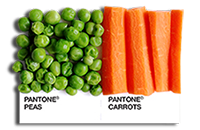
The largest marketing machine in the world is the very prirodnim promote countless products that refer to nature, to loved them and bought, there is another hidden, almost unconscious, but even more powerful marketing mechanism. Even the most astute marketer is unlikely to really understand what products a biomimetic marketing advertise themselves through nature, but at the same time also contribute to the formation of a very one-sided, romanticized image of nature in the minds of people. By participating in favorable positioning of goods, nature itself is positioned as intelligent, harmonious, soothing, natural, healthy, honest and beautiful force. Dark, negative, side of nature is ignored by marketers because it is impossible to sell products with diseases, death, hurricanes, floods or other cruel, unpredictable and "immoral" manifestations of nature. Nature is most successfully promoted the product of our time. published
Source: theoryandpractice.ru
© Sears
Green electricity, organic shampoo, Jaguar convertibles, Red Bull, bio beef, Camel cigarettes and Puma sneakers. If you look closely, we are surrounded by a great number of products applying to nature through the brand. This phenomenon is called "biomimetic marketing": use of images of "natural" for product promotion. Philosopher and author of the concept of "Next Nature" Koert van Mensvoort explores how nature is transformed into a market and an ideological tool.
Nature is a terrific marketing tool, and corporations know it. Associations with nature give us a sense of recognition and trust. Often a biomimetic marketing uses a very peculiar, unexpected way. For example, when forced to choose between eighteen brands of condoms at the pharmacy, you intuitively reach out to those in the title has the word "natural", not paying attention to the fact that "natural condoms" is, in fact, an oxymoron and hardly fits into the concept of intimacy with nature. But who cares? After all, a biomimetic marketing closer to marketing than to nature. Its goal is the adoption of the positive qualities of the product in the consumer's mind. The nature of its aura of authenticity, harmony, beauty and depth is one of the best ways to achieve this goal. The result is a detailed analysis of the phenomenon of a biomimetic marketing, can be divided into five partially overlapping strategies of its application.

Strategy # 1: Nature as Estetica products from this category the relationship with the natural images used are weak or absent: Lacoste is in no way affiliated with crocodiles, Linux is irrelevant to the penguins, Bacardi — not about bats, but Apple is certainly not fruit company. Reference to natural imagery is used mainly for aesthetic reasons. The location of the mast cell repeater on the territory of the resort tourists will be made much warmer if to disguise it under a pine tree. Artificial Islands in Dubai, attract more attention and have higher market value, being designed in the shape of a palm tree. The argument of marketing both simple and effective: people are familiar with natural phenomena and, as a rule, treat them positively. Brands just use the existing perception in their favor.

Strategy # 2: Nature as metaprograming between the first and second category slim: in the case of products of the second category, a connection with nature more focused on the function of the product. For example, calling Puma sneakers, their creators not only form a link to the aesthetic component, but also hope to project some of the positive qualities of this elegant, powerful animal to your product. The comparison should not be taken literally, it's more of a metaphor, after all Puma sneakers are made of plastic and not from Cougars. Other examples of this approach — a convertible Jaguar, bald eagle as the symbol of the United States, the chirping Twitter bird on the verge of extinction Panda as the logo of the world Fund of Protection of wildlife and the Bunny from Playboy magazine, which tells not about rabbits, and trying the alleged sexual appetites of rabbits in women. Just imagine what BF was, if the US government used the turtle as a mascot, and as their logos Puma used an elephant, a Twitter dog, WWF — Dodo, Jaguar — cow and the Playboy of the spider. It would have destroyed the identity of their brands.

Strategy # 3: Promote a sense naturalistically category methods of biomimicry in marketing combines a group of products that emphasize the feeling of naturalness. The bra is so light and soft that it literally feel naked. Hair dye that will make any brunette to a natural blonde. The previously mentioned natural condoms also fall into this category. What exactly is promised naturalness, as a rule, is not defined, but it is always something positive in the end, it is about selling product! I wonder what is the use of references to nature not only sells the product. As a side effect it also shapes our conception of nature as something beautiful, full of harmony, peace and tenderness.

Strategy # 4: focus on ecologicalproblems fourth category do not have to transfer to the consumer the feeling of naturalness. Their biomimicry revolves around the concept of "friendly to nature". As a rule, comparison with other "less friendly" products from competing brands. You may recall, for example, the Toyota ECO Sports Utility Vehicle which is less polluting than the average SUV, hybrid Hummer or a Honda i-CTDI, which is singing flowers, birds and rabbits, dancing around the engine. They greeted him joyfully in his environment because it pollutes a little less than bad smelly diesel engine competitors.
Another example of "green" electricity. Although the electricity is not connected with nature, the "green" label attached is on the grounds that some of the electricity produced using renewable sources of energy. I wonder what the energy companies really not able to separate clean electricity from polluting in the course of its outlet. So when you switch to green electricity in your home continue to run the same electrons as before. The ecological component in this case is based solely on the words energy company, which is necessary in order to balance the percentage of electricity generated from renewable sources with a number of clients who prefer "green" electricity.

Strategy # 5: focus on natural proizvodstva category includes products that are produced naturally. It can be argued that in this case the statement about being out in nature are the most convincing. Think about eco-friendly tomatoes, mineral water from natural springs, organic shampoo and organic meat. Unlike conventional products that typically are produced in large industrial plants and stored with the use of chemical preservatives and dyes, bio-, eco - and organic products proudly emphasize their naturalness. In practice, this usually means a return to more traditional methods of production in small batches, reducing the degree of environmental pollution and the use of more sustainable methods of production.
In addition to the unique properties of naturalness of production, the products of this category often use many other, if not all, of the funds a biomimetic marketing described above. Organic products are usually sold in a green-brown packs are made of natural materials, often festooned with images of natural elements used in the production of the product. It is obvious that an honest, open process of production passes to the buyers of the product feeling healthy and the right choice, and just as importantly, the natural production process is almost always more environmentally friendly. There is therefore nothing surprising in the fact that over the last twenty years naturally made products have gained significant market share. What started with small farmers markets, working on an idealistic basis, now transformed into an entire industry, functioning under strict rules and strictly regulate what the product can add to its name the prefix bio - and eco - friendly or to call themselves "organic".

The largest marketing machine in the world is the very prirodnim promote countless products that refer to nature, to loved them and bought, there is another hidden, almost unconscious, but even more powerful marketing mechanism. Even the most astute marketer is unlikely to really understand what products a biomimetic marketing advertise themselves through nature, but at the same time also contribute to the formation of a very one-sided, romanticized image of nature in the minds of people. By participating in favorable positioning of goods, nature itself is positioned as intelligent, harmonious, soothing, natural, healthy, honest and beautiful force. Dark, negative, side of nature is ignored by marketers because it is impossible to sell products with diseases, death, hurricanes, floods or other cruel, unpredictable and "immoral" manifestations of nature. Nature is most successfully promoted the product of our time. published
Source: theoryandpractice.ru
Full energy autonomy or how to survive with solar panels in the Outback
Gloxinia from seed care and growing

